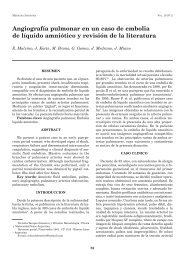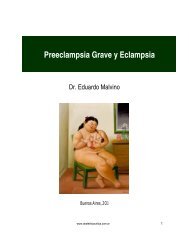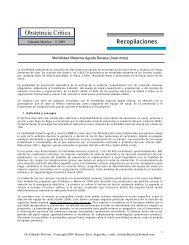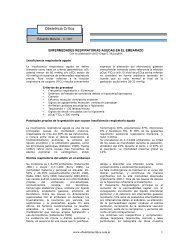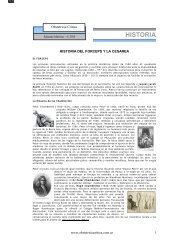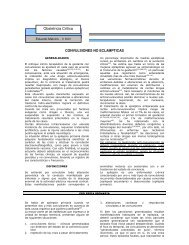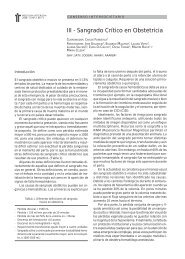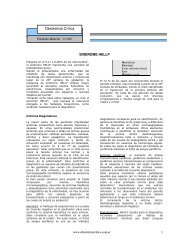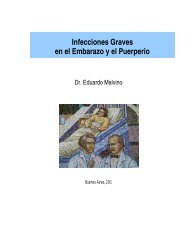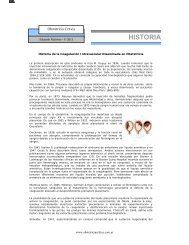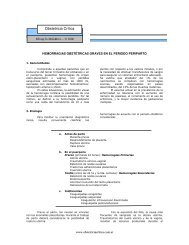New Delhi, India.Int J Gynaecol Obstet. 2007 Dec;99(3):248-9. Epub 2007 Sep 24.Clinicopathology of maternal scleroderma.Papakonstantinou K, Hasiakos D, Kondi-Paphiti A.2nd Department of Obstetrics and Gynecology, University of Athens, AretaieionHospital, Athens, Greece. k_papakon@yahoo.grInt J Gynaecol Obstet. 2007 Dec;99(3):229-32. Epub 2007 Jul 20.Postpartum urinary retention after cesarean delivery.Liang CC, Chang SD, Chang YL, Chen SH, Chueh HY, Cheng PJ.Department of Obstetrics and Gynecology, Chang Gung Memorial Hospital,Taoyuan, Taiwan; Chang Gung University, Taoyuan, Taiwan.ccjoliang@cgmh.org.twOBJECTIVE: To investigate the incidence of postpartum urinary retention (PUR)after cesarean delivery and determine which obstetric factors contribute to thisproblem. METHOD: A prospective study recruited 605 pregnant women who hada cesarean delivery. Each patient's postvoid residual bladder volume (PVRBV)was estimated with an ultrasound scan after first micturition. The women weredivided into 2 groups: PUR (PVRBV > or =150 mL) and normal. Patients'characteristics, obstetric parameters, and prevalence of lower urinary tractsymptoms at 3 months postpartum were compared. RESULT: The overallincidence of PUR was 24.1%. The incidence of overt and covert PUR was 7.4%and 16.7%, respectively. Morphine-related postoperative analgesia, multiplepregnancy, and low body mass index were significantly associated with PUR. At3-month follow-up, 5.0% of patients had obstructive voiding symptoms and 9.1%had irritative voiding symptoms. CONCLUSION: Our results revealed PUR was acommon phenomenon in patients who had a cesarean delivery, and morphinerelatedpostoperative analgesia was the main contributing factor.Int J Gynaecol Obstet. <strong>2008</strong> Mar 4 [Epub ahead of print]The influence of medical abortion compared with surgical abortion onsubsequent pregnancy outcome.Gan C, Zou Y, Wu S, Li Y, Liu Q.West China Hospital, Sichuan University, Chengdu, Sichuan, China.Seven prospective cohort studies (12484 cases) were included in this review ofthe respective effects on the next pregnancy of medical and surgical abortion inearly pregnancy. The incidence of miscarriage and postpartum hemorrhage wassignificantly lower in the pregnancy following a medical abortion. No othersignificant differences were found. With respect to the outcome of the nextpregnancy, first-trimester medical abortions may thus be safer than the surgicaloption.Int J Gynaecol Obstet. <strong>2008</strong> Mar 3 [Epub ahead of print]Severe liver disease in pregnancy.Chen H, Yuan L, Tan J, Liu Y, Zhang J.
Obstetrics and Gynecology Department, The Second Affiliated Hospital of SunYat-Sen University, Guangdong, China.Objective: To determine the clinical characteristics of patients with fulminanthepatitis of pregnancy (FHP) and acute fatty liver of pregnancy (AFLP) andanalyze their correlation with pregnancy outcome. Methods: Of 55 pregnantwomen with severe liver disease, 41 had FHP and 14 had AFLP. Results:Jaundice was the primary manifestation for both FHP and AFLP and hepaticencephalopathy was the most significant complication for both. Disseminatedintravascular coagulation, albuminuria, and prothrombin activity were found to beindependent risk factors of maternal mortality for both. However, the rates ofpreterm labor, fetal demise, and neonatal asphyxia were lower in the FHP group.Conclusion: Women with FHP or AFLP are at risk for severe complications andadverse pregnancy outcome. Since the 2 conditions are managed differently,early diagnosis is essential.Int J Gynaecol Obstet. <strong>2008</strong> Feb 27 [Epub ahead of print]Congenital intestinal malrotation masquerading as hyperemesisgravidarum.Pelikan H, Stoot J, Meens-Koreman S, Teijink J.Department of Obstetrics and Gynecology, Atrium Medical Center, Heerlen, TheNetherlands.Obstet Gynecol. <strong>2008</strong> Mar;111(3):777.Getting to havarti: moving toward patient safety in obstetrics.Mirabello J.Rochester, New Hampshire, e-mail: J.Mirabello@FMHospital.com.Obstet Gynecol. <strong>2008</strong> Mar;111(3):704-709.Risk Factors for Recurrence of Group B Streptococcus Colonization in aSubsequent Pregnancy.Cheng PJ, Chueh HY, Liu CM, Hsu JJ, Hsieh TT, Soong YK.Department of Obstetrics and Gynecology, Chang Gung Memorial Hospital andChang Gung University College of Medicine, Linkou Medical Center, Taoyuan,Taiwan; and Department of Obstetrics and Gynecology, Chang Gung MemorialHospital and Chang Gung University College of Medicine, Taipei, Taiwan.OBJECTIVE: To document rates of recurrent group B streptococci (GBS)colonization in women with previous GBS colonization in an initial pregnancy andto assess maternal risk factors associated with recurrence. METHODS: Aretrospective, longitudinal study was performed in a teaching hospital on womenwith GBS colonization who were pregnant between 2002 and 2006 and had atleast one subsequent pregnancy during the same time period. When only theindex and first subsequent pregnancy were analyzed, the cohort included 251women. The rate of recurrence was estimated for GBS colonization in thepregnancy after the index pregnancy for GBS colonization. Multivariableregression models were constructed to model recurrence of GBS colonization ina subsequent pregnancy as functions of potential predictors to estimate relative
- Page 1 and 2: Obstetricia CríticaEduardo Malvino
- Page 3 and 4: gestational age at delivery, Apgar
- Page 5 and 6: Maternal risk factors associated wi
- Page 7 and 8: exclusive categories: 1) bleeding r
- Page 9 and 10: Division of Obstetrics and Gynecolo
- Page 11 and 12: as uncommon as primary synovial sar
- Page 13 and 14: Cardiac Troponin I Elevation After
- Page 15 and 16: significant increase in carbohydrat
- Page 17 and 18: of one per 1500 pregnant women. Cal
- Page 19 and 20: Background: To investigate the rela
- Page 21 and 22: PowerLab hardware unit and Chart v3
- Page 23 and 24: Prophylactic antibiotics for the pr
- Page 25 and 26: years old (n = 23,921). Univariate
- Page 27 and 28: five women uses FDA C, D and X drug
- Page 29 and 30: and complicated. CONCLUSION: Irresp
- Page 31: clinically effective. Nevertheless,
- Page 35 and 36: Pregnancy-induced severe gestationa
- Page 37 and 38: penicillin or ampicillin, whereas 3
- Page 39 and 40: Abetalipoproteinemia complicating t
- Page 41 and 42: case of acute abdominal pain, abdom
- Page 43 and 44: Callaway LK, Lawlor DA, McIntyre HD
- Page 45 and 46: ketoacidosis during induction of la
- Page 47 and 48: and low platelets (HELLP) syndrome.
- Page 49 and 50: Division of Reproduction and Endocr
- Page 51 and 52: simulation center, and to teamwork
- Page 53 and 54: significantly associated with psori
- Page 55 and 56: episiotomy and prophylactic oxytoci
- Page 57 and 58: ecent obesity epidemic has had a pr
- Page 59 and 60: guidelines in 2002. However, the di
- Page 61 and 62: need for intensive neonatal care, h
- Page 63 and 64: mEq/l) metabolic acidosis. Other et
- Page 65 and 66: Acta Obstet Gynecol Scand. 2008;87(
- Page 67 and 68: etrospective review of pregnancies
- Page 69 and 70: Maternal obesity and pregnancy comp
- Page 71 and 72: interval 3.78-5.30) and severe obst
- Page 73 and 74: of GDM. Methods: 1,662 pregnant wom
- Page 75 and 76: Registers. POPULATION: All pregnant
- Page 77 and 78: J Reprod Med. 2008 May;53(5):365-8.
- Page 79 and 80: egarding cervical cancer screening
- Page 81 and 82: College of Surgeons in Ireland, Dub
- Page 83 and 84:
maternal morbidity has increased bo
- Page 85 and 86:
increased uterine activity was rela
- Page 87 and 88:
options.Journal of Perinatology adv
- Page 89 and 90:
atio, 1.73; 95% CI, 1.11-2.69). Thi
- Page 91 and 92:
discharge at site of perineal repai
- Page 93 and 94:
Thirty-one other patients refused t
- Page 95 and 96:
Department of Obstetrics and Centre
- Page 97 and 98:
developed any new problems. CONCLUS
- Page 99 and 100:
It seems to be safe to continue bre
- Page 101 and 102:
colonization in a subsequent pregna
- Page 103 and 104:
Crude and adjusted odds ratios were
- Page 105 and 106:
the subsequent development of ESRD.
- Page 107 and 108:
Acta Obstet Gynecol Scand. 2008 Sep
- Page 109 and 110:
OBJECTIVE: To investigate pregnancy
- Page 111 and 112:
OBJECTIVE: To compare the perinatal
- Page 113 and 114:
exceptionally rare. CASE: A 23-year
- Page 115 and 116:
CONCLUSION: This case demonstrates
- Page 117 and 118:
peripartum hysterectomy included ce
- Page 119 and 120:
BMJ. 2008 Sep 8;337:a1397. doi: 10.
- Page 121 and 122:
Lancet. 2008 Sep 17. [Epub ahead of
- Page 123 and 124:
Obstet Gynecol. 2008 Oct;112(4):951
- Page 125 and 126:
Additionally, the effects of distur
- Page 127 and 128:
analyzed. Initial echocardiographic
- Page 129 and 130:
pathologic or anatomically anomalou
- Page 131 and 132:
Eur J Obstet Gynecol Reprod Biol. 2
- Page 133 and 134:
chorioamnionitis; and (3) in contra
- Page 135 and 136:
underlying conditions related to st
- Page 137 and 138:
third trimester of pregnancy.BMJ. 2
- Page 139 and 140:
Texas Health Science Center, Housto
- Page 141 and 142:
preterm birth before 34 weeks (P
- Page 143 and 144:
cases. Most patients (91%) received
- Page 145 and 146:
Ultrasound Obstet Gynecol. 2008 Nov
- Page 147 and 148:
Maggard MA, Yermilov I, Li Z, Magli
- Page 149 and 150:
Clinical and Population Health, Per
- Page 151:
the biologic mechanism is unclear,



